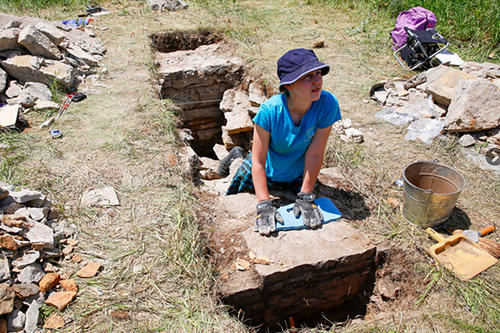
Located at the confluence of the Mississippi and Minnesota rivers, Fort Snelling is one of Minnesota's most well-known sites. But its history is more complex than that of just a military fort. The fort's location is a sacred space for the Dakota people, and it was also used as a prison and concentration camp. It is these stories—and more—that anthropology professor Katherine Hayes is determined to tell.
Hayes and a small group of students began scanning historic maps of the fort in spring 2016, in advance of excavating a Civil War-era military prison site, looking for traces of day-to-day life people had left behind.
She aims to “use the physicality of the space to think about what the experience might have been like for the people inside [and to see] how to make the buildings speak that history.” She calls this technique “thinking through the dirt."
It is important, she says, to be honest about the history of a land where settler and indigenous interests did not align—and where Dakota people were incarcerated in the 1860s, African-Americans were enslaved in the 19th century, and Japanese-American men enlisted at the Japanese language school were brought from incarceration camps and trained at an “intelligence school” during World War II.
Hayes’ work is part of the Minnesota Historical Society’s efforts to include more voices and acknowledge the painful history of Fort Snelling in hopes of bringing awareness to the public and encourage conversations.
- Categories:
- Education





